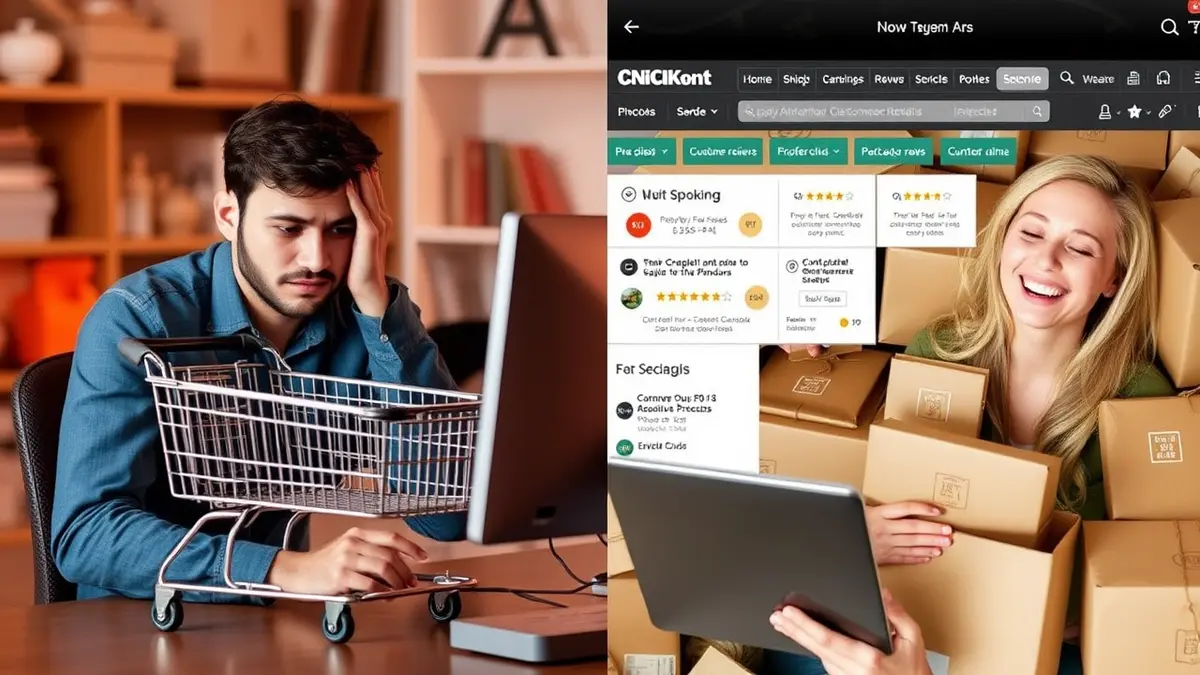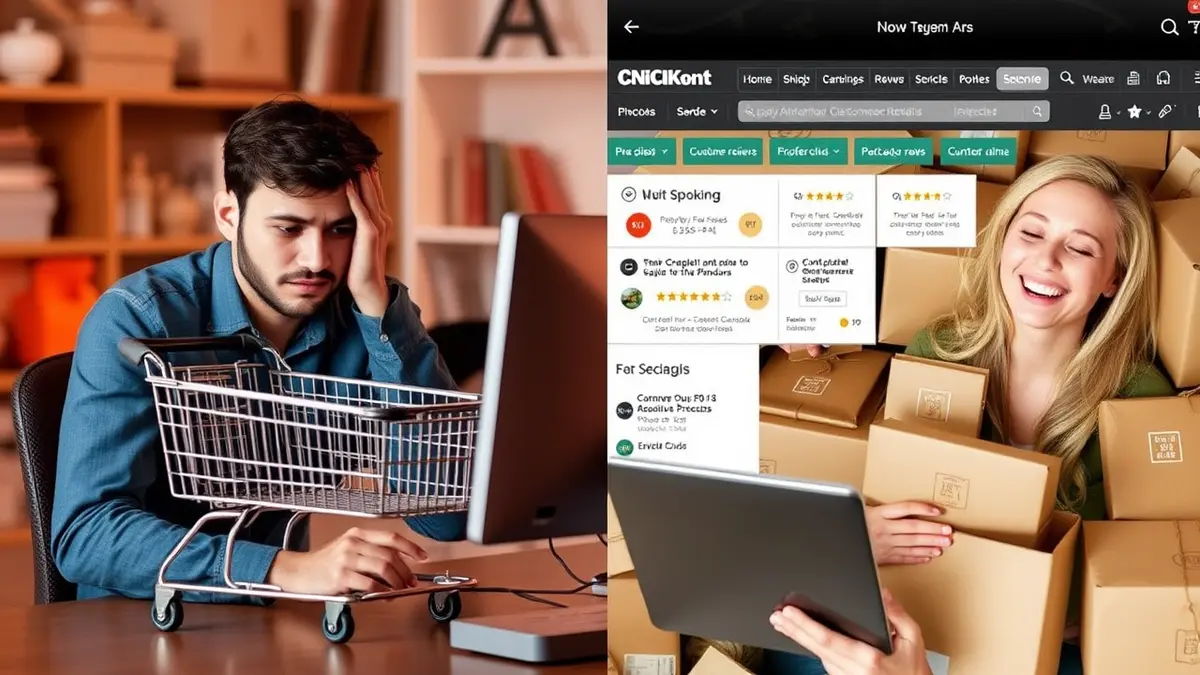Product descriptions are the unsung heroes of e-commerce, quietly working to turn browsers into buyers. But are yours pulling their weight? This article dives into the art of crafting compelling product descriptions that not only inform but also entice, turning casual interest into confident purchases. We’ll look at common pitfalls and actionable strategies to help you optimize your descriptions and watch your sales climb.
What You’ll Learn
- Why Product Descriptions Matter
- Understanding Your Target Audience
- Key Elements of an Effective Product Description
- Writing Compelling Copy: Features vs. Benefits
- Optimizing for Search Engines (SEO)
- Using High-Quality Images and Videos
- Mobile Optimization: Descriptions for Smaller Screens
- A/B Testing Your Product Descriptions
- Common Mistakes to Avoid
- Examples of Great Product Descriptions
- Tools and Resources to Help You Write Better Descriptions
- Future-Proofing Your Product Description Strategy
Let's face it, you've got the products – now you need the prose to properly showcase them.
Why Product Descriptions Matter
Think of your product descriptions as your 24/7 sales team. They're working tirelessly, even when you're not, to convince potential customers that your product is the one they need. A well-crafted product description doesn't just list features; it tells a story, paints a picture, and evokes a feeling. It answers questions before they're even asked and alleviates any doubts a shopper might have.
More than just informative, a killer product description can be the difference between a bounce and a buy.
Consider this: a study by the Nielsen Norman Group (I swear I read about it… somewhere!) found that users often skim product pages, paying close attention to headings, bullet points, and, you guessed it, product descriptions. If your description is bland, generic, or, worse, missing altogether, you're missing out on a prime opportunity to capture their attention and seal the deal. In a world saturated with options, a captivating description can be the key differentiator. And remember, product descriptions contribute to SEO, helping potential customers find your products through search engines. It’s an investment, people!
Understanding Your Target Audience
Before you even put pen to paper (or fingers to keyboard), you need to know who you're talking to. Are you selling high-end artisanal coffee to discerning connoisseurs, or are you offering budget-friendly phone cases to students? Your target audience will dictate the tone, language, and information you include in your product descriptions.
Think about their needs, their pain points, and their aspirations. What motivates them? What are their hesitations? What kind of language do they use? If you're selling organic baby food, your audience is likely health-conscious parents concerned about the ingredients their children consume. Your description should highlight the natural, wholesome qualities of your product and address any concerns about additives or artificial ingredients.
Honestly? This is why focus groups still exist… and are kinda useful!
On the flip side, if you're selling gaming headsets, your audience is likely looking for immersive audio, comfortable fit, and clear communication. Your description should focus on the technical specifications, the comfort level during long gaming sessions, and the clarity of the microphone. Tailoring your message to your target audience is crucial for creating a connection and building trust.
Key Elements of an Effective Product Description
Okay, so you know who you're talking to. Now, let's break down the key ingredients of a product description that actually works:
- A Clear and Concise Headline: This is your first (and sometimes only) chance to grab attention. Make it count! A good headline should be descriptive and highlight a key benefit.
- An Engaging Opening: Don't start with a boring list of features. Hook the reader with a compelling statement or a relatable scenario.
- Detailed Features and Specifications: Provide all the necessary information about the product, including dimensions, materials, weight, and technical specs.
- Benefits, Not Just Features: This is crucial! Explain how the features translate into tangible benefits for the customer.
- A Tone That Aligns with Your Brand: Your product descriptions should reflect your brand's personality, whether it's playful, sophisticated, or professional.
- High-Quality Images or Videos: Visuals are essential for showcasing the product from different angles and in action. (More on this later.)
- A Clear Call to Action: Tell the customer what you want them to do next – "Add to Cart," "Shop Now," or "Learn More."
- Scannability: Use bullet points, headings, and white space to make the description easy to read and digest. Nobody wants to read a wall of text.
- Social Proof: Include customer reviews, testimonials, or ratings to build trust and credibility.
Writing Compelling Copy: Features vs. Benefits
This is where the magic happens! It’s the difference between saying "This blender has a 1000-watt motor" (feature) and "This blender effortlessly crushes ice and blends even the toughest ingredients into silky-smooth smoothies in seconds" (benefit). See the difference?
Features are facts; benefits are the value those facts provide to the customer.
Always translate features into benefits. For example:
- Feature: Made from 100% organic cotton.
- Benefit: Enjoy the softest, most breathable comfort against your skin, knowing you're making an environmentally conscious choice.
- Feature: Water-resistant up to 50 meters.
- Benefit: Wear your watch confidently while swimming, showering, or washing dishes without worrying about damage.
- Feature: Built-in noise-canceling technology.
- Benefit: Immerse yourself in your music and block out distractions, whether you're on a busy commute or working in a noisy office.
The key is to focus on how the product will improve the customer's life, solve a problem, or fulfill a desire.
Optimizing for Search Engines (SEO)
Don't forget about SEO! Your product descriptions are a prime opportunity to improve your search engine ranking and attract more organic traffic. Incorporate relevant keywords throughout your description, but do so naturally. Keyword stuffing is a big no-no and can actually hurt your ranking.
Do your keyword research to identify the terms that your target audience is using to search for products like yours. Use these keywords in your headline, body copy, and image alt text. For instance, if you’re selling “retro sunglasses,” use that phrase a few times (if relevant) and maybe sprinkle in some synonyms like “vintage shades” or “throwback eyewear.”
Remember that long-tail keywords (longer, more specific phrases) can be particularly effective, as they often have less competition and can attract highly qualified traffic. So instead of just "coffee maker," try "automatic drip coffee maker with programmable timer." Keep the copy readable and engaging—write for humans first, search engines second.
Using High-Quality Images and Videos
No one wants to buy a product they can't see properly. High-quality images and videos are essential for showcasing your products and giving customers a clear understanding of what they're buying. Use multiple images from different angles, and consider including a lifestyle shot that shows the product in use.
A TechCrunch piece last spring noted a massive jump in conversion rates when e-commerce sites started embedding short, looping product videos on their pages.
If possible, create a short video that demonstrates the product's features and benefits. Video is especially effective for products that require assembly or have complex features. Make sure your images and videos are optimized for web, so they load quickly and don't slow down your page.
Mobile Optimization: Descriptions for Smaller Screens
Let’s get real: most people are browsing on their phones. Your product descriptions need to be just as effective on a small screen as they are on a desktop. Keep your descriptions concise and easy to scan, using bullet points and short paragraphs.
Prioritize the most important information and place it at the top of the description. Use high-quality images that are optimized for mobile devices. Make sure your website is responsive, so the product descriptions adapt to different screen sizes. Test your product descriptions on different devices to ensure they look good and are easy to read. Nobody wants to pinch and zoom just to figure out what you're selling.
A/B Testing Your Product Descriptions
Don't just guess what works—test it! A/B testing involves creating two different versions of your product description and showing them to different groups of users. Track which version performs better in terms of conversion rates, click-through rates, and other key metrics.
Test different headlines, body copy, calls to action, and even image placements. Use A/B testing tools to automate the process and track your results. Over time, you'll gain valuable insights into what resonates with your audience and what doesn't. Continuous testing and optimization are crucial for improving the effectiveness of your product descriptions.
Common Mistakes to Avoid
Here's a quick rundown of common product description faux pas:
- Generic Descriptions: Avoid using manufacturer-provided descriptions that are bland and unoriginal.
- Lack of Detail: Don't assume customers know everything about your product. Provide all the necessary information.
- Poor Grammar and Spelling: Proofread your descriptions carefully! Errors can damage your credibility.
- Keyword Stuffing: Don't cram keywords into your description in an unnatural way. It's bad for SEO and readability.
- Ignoring Your Target Audience: Write for your customers, not for yourself.
- Not Highlighting Benefits: Focus on the value the product provides, not just the features.
- Neglecting Mobile Optimization: Make sure your descriptions are easy to read on mobile devices.
- No Call to Action: Tell customers what you want them to do next.
- Skipping A/B Testing: Continuously test and optimize your descriptions to improve their performance.
- Too much jargon: Unless you’re positive your audience uses it daily, cut it.
Examples of Great Product Descriptions
Let's take a look at some examples of product descriptions that nail it:
- Example 1: A high-end watch: "Crafted from surgical-grade stainless steel and featuring a scratch-resistant sapphire crystal, this timepiece is more than just a watch—it's a statement of sophistication and enduring style. Powered by a Swiss-made automatic movement, it offers unparalleled accuracy and reliability. Whether you're attending a formal event or exploring the great outdoors, this watch will be your constant companion."
- Example 2: A cozy blanket: "Wrap yourself in the ultimate comfort with our luxurious fleece blanket. Made from ultra-soft, breathable fabric, it's perfect for snuggling up on the couch, adding an extra layer of warmth to your bed, or taking on your next outdoor adventure. Lightweight and easy to care for, this blanket is a must-have for anyone who loves to relax in style."
- Example 3: A quirky coffee mug: "Start your day with a smile with our hilarious 'I haven't had my coffee yet' mug. Made from durable ceramic and featuring a vibrant, long-lasting print, this mug is sure to become your new favorite. Whether you're at home or at the office, it's the perfect way to show off your sense of humor and let everyone know you're not a morning person until you've had your caffeine fix."
Notice how each of these descriptions focuses on the benefits, uses vivid language, and aligns with the brand's personality.
Tools and Resources to Help You Write Better Descriptions
Don't worry, you don't have to go it alone. There are plenty of tools and resources available to help you write better product descriptions:
- Grammarly: For checking grammar and spelling.
- Hemingway Editor: For improving readability and clarity.
- SEMrush or Ahrefs: For keyword research and SEO analysis.
- Google Analytics: For tracking the performance of your product pages.
- Optimizely or VWO: For A/B testing your product descriptions.
- Wishmerge (Hey, that's us! Check out How to Optimize Your Wishlist Tracking Best Prices Online Faster for more tips on boosting e-commerce sales!)
Future-Proofing Your Product Description Strategy
The e-commerce landscape is constantly evolving, so it's important to future-proof your product description strategy. Here are a few trends to keep in mind:
- AI-Powered Content Generation: AI tools are becoming increasingly sophisticated and can help you generate product descriptions quickly and efficiently. (But be careful not to rely on them too much!)
- Voice Search Optimization: As voice search becomes more popular, it's important to optimize your descriptions for voice queries. Use natural language and answer common questions.
- Personalization: Tailor your product descriptions to individual customers based on their browsing history and preferences.
- Augmented Reality (AR): AR is allowing customers to virtually try on products before they buy them. Incorporate AR features into your product descriptions to enhance the shopping experience.
Product descriptions aren’t a “set it and forget it” task. They’re a living, breathing part of your sales strategy that needs constant attention. So, go forth, optimize, and watch those sales soar! Oh, and if you're still struggling with low sales, check out Low Sales? Here’s How to Boost Conversions on our blog.






